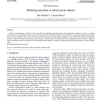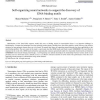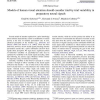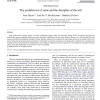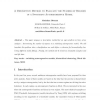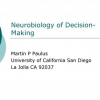NN
2006
Springer
15 years 22 days ago
2006
Springer
Learning vector quantization (LVQ) constitutes a powerful and intuitive method for adaptive nearest prototype classification. However, original LVQ has been introduced based on he...
97
Voted
NN
2006
Springer
15 years 22 days ago
2006
Springer
Selective visual attention is believed to be responsible for serializing visual information for recognizing one object at a time in a complex scene. But how can we attend to objec...
NN
2006
Springer
15 years 22 days ago
2006
Springer
Identification of the short DNA sequence motifs that serve as binding targets for transcription factors is an important challenge in bioinformatics. Unsupervised techniques from t...
89
Voted
NN
2006
Springer
15 years 22 days ago
2006
Springer
The Generative Topographic Mapping (GTM) was originally conceived as a probabilistic alternative to the well-known, neural networkinspired, Self-Organizing Maps. The GTM can also ...
101
Voted
NN
2006
Springer
15 years 22 days ago
2006
Springer
Several bioinformatics data sets are naturally represented as graphs, for instance gene regulation, metabolic pathways, and proteinprotein interactions. The graphs are often large ...
NN
2006
Springer
15 years 22 days ago
2006
Springer
We introduce the Hierarchically Growing Hyperbolic Self-Organizing Map (H2 SOM) featuring two extensions of the HSOM (hyperbolic SOM): (i) a hierarchically growing variant that al...
NN
2006
Springer
15 years 22 days ago
2006
Springer
102
Voted
NN
2006
Springer
15 years 22 days ago
2006
Springer
Most reinforcement learning models of animal conditioning operate under the convenient, though fictive, assumption that Pavlovian conditioning concerns prediction learning whereas...
NN
2006
Springer
15 years 22 days ago
2006
Springer
NN
2006
Springer
15 years 22 days ago
2006
Springer

